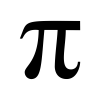3D ... but top down?
I'm in the design stage of creating a turn-based wargame (although I've already done a fair amount of coding). I'm leaning towards using OpenGL and thus making it a 3D game, but restricting the camera to looking straight down on the map at all times. The camera will be able to pan and rotate (about a z-axis pointing out of the screen) and zoom, but it won't be able to tilt. From the viewpoint of game design I can think of two objections: Objection 1: Why not allow a totally free camera? You're making it 3D with OpenGL, so what's the problem with adding more freedom to the camera? Won't players get frustrated by not be able to tilt the camera as they see fit? Response: By restricting the view to straight-down, I'll be able to make my 3D graphics engine a lot simpler. For example, my culling algorithm will be simpler, and my LOD algorithm will be simpler. In other words, it makes my life as a programmer easier (I don't consider myself a first-class programmer). Objection 2: Why use a 3D API at all if you're not going to look straight down? Why not just use a 2D tile-based engine? Response: But there are 3D aspects that I will be using and taking advantage of. My artistic skills suck, but in 3D I can create a decent looking landscape with features like mountains and rivers and trees and shadows and other special effects algorithmically or programmatically generated. And most of these special effects I can change in real-time. Also, the skills I pick up in creating this game might be useful as a base from which to create a future game with a truly free camera. So what do you think? Are my responses valid? Do you have any other objections?
I'm writing a TBS as well, (but fantasy based), and have my engine pretty much up and running. I use Opengl in perspective mode but the camera angle is similar to other RTS games like WC3 and AoM. I prefer this way after experimenting with top down and doing a bit of 2D as it looks more impressive when you move the camera around. When you come to sell the game, (if you are), then the screenshots of nicely rendered 3D images should hopefully boost the number of downloads as well.
I took out the rotation option because it didn't offer any advantages since the landscape is all flat and am sticking with just camera pan and a bit of zoom.
There are of course more things to think about when going with opengl, (ray casting and matrix manipulations on objects took me a while), but in the end I'm glad i'd put in the hard yards as I'm very happy with the way my project is coming along.
I took out the rotation option because it didn't offer any advantages since the landscape is all flat and am sticking with just camera pan and a bit of zoom.
There are of course more things to think about when going with opengl, (ray casting and matrix manipulations on objects took me a while), but in the end I'm glad i'd put in the hard yards as I'm very happy with the way my project is coming along.
----------------------------------------------------
Check out my casual TBS game blog
----------------------------------------------------
Check out my casual TBS game blog
----------------------------------------------------
March 01, 2005 12:20 AM
I can only think of one objection to it, but it may be a major one. (Please excuse my english, I'm still learning on a day-to-day basis...)
In fact, the eagle-eye-shot you're trying to get renders everything flat, thus depriving the eye from the possibility to create 3D. Why then use OpenGL and a 3D environment? And if you REALLY want to make things in 3D in order to have a more appealing look, then why leave it at that stage and not use an "isometric 3D", with a static tilted camera angle?
In fact, from what I gathered from your post, you are creating a whole WORLD in 3D, with mountains. For a TBS, I hope this means the possibility to use them as cover from your enemy's sight or use the height to deal more damage with ranged units. But a problem arises. If your camera is static AND tilted, your unities are really going to get hidden from your sight if and when they get behind it. And if your mountains are NOT high enough to provide shelter, then, they are not real mountains and probably just hillocks, mounds or possibly, bumps on the great road to playability.
Then, what you're left with are these two possibilities:
Either you keep to your idea of 3D world, but have to allow for more freedom of movement for the camera in order to actually USE the 3D...
Or you keep to eagle-eye overview. But this means OpenGL is NOT the best suited engine you might want to use, and would probably make a better use of a Shibo tiles or Mahjong tiles program, like in tabletop wargames. But this deprives you from 3D, and leaves you with just another "battle for Ardennes"
The choice is yours, my friend.
In fact, the eagle-eye-shot you're trying to get renders everything flat, thus depriving the eye from the possibility to create 3D. Why then use OpenGL and a 3D environment? And if you REALLY want to make things in 3D in order to have a more appealing look, then why leave it at that stage and not use an "isometric 3D", with a static tilted camera angle?
In fact, from what I gathered from your post, you are creating a whole WORLD in 3D, with mountains. For a TBS, I hope this means the possibility to use them as cover from your enemy's sight or use the height to deal more damage with ranged units. But a problem arises. If your camera is static AND tilted, your unities are really going to get hidden from your sight if and when they get behind it. And if your mountains are NOT high enough to provide shelter, then, they are not real mountains and probably just hillocks, mounds or possibly, bumps on the great road to playability.
Then, what you're left with are these two possibilities:
Either you keep to your idea of 3D world, but have to allow for more freedom of movement for the camera in order to actually USE the 3D...
Or you keep to eagle-eye overview. But this means OpenGL is NOT the best suited engine you might want to use, and would probably make a better use of a Shibo tiles or Mahjong tiles program, like in tabletop wargames. But this deprives you from 3D, and leaves you with just another "battle for Ardennes"
The choice is yours, my friend.
March 01, 2005 01:55 AM
Quote:
Original post by Anonymous Poster
In fact, the eagle-eye-shot you're trying to get renders everything flat, thus depriving the eye from the possibility to create 3D.
My limited answer to your objection is: shadows, lighting and perspective. My units and my terrain will (hopefully!) cast shadows. The lighting will (hopefully!) vary according the time of day. A unit on top of a mountain will (depending on the camera height) look larger than one down in a valley. These visual cues will (hopefully!) be enough to make it look 3D.
But maybe this isn't enough. Thanks for the feedback.
That last post was by me, by the way. Sometimes this board thinks I'm logged out when it tells me I'm not! Weird.
March 01, 2005 02:48 AM
Let me get this straight, real 3D comes from binocularity. Fake 3D comes from the possibility to place a foreground and a background on different levels of depth. The shadows do NOT help. Try to think along those lines. Imagine a submarine battle game or a space battle game. Do you think it would be possible to have a battle in depth if the only way of knowing if you shot in the right direction or "azimut" was the cast shadows? Wouldn't you be shooting above or below?
There you are. This is the same thing. Being able to tell that a unit is higher up than another simply by the size of it does not help very much in the art of warfare. Of course, it would give nice visual effects, but would this HELP the gameplay? I don't think so. It is open to debate, but here is my opinion.
There you are. This is the same thing. Being able to tell that a unit is higher up than another simply by the size of it does not help very much in the art of warfare. Of course, it would give nice visual effects, but would this HELP the gameplay? I don't think so. It is open to debate, but here is my opinion.
March 01, 2005 02:57 AM
Of course, you're not coding a combat simulation, or anything closer, but I think it would be nice to be able to tell if your unit is likely to be able to hit the target before asking the computer to decide so for yourself. This would mean strategy, being able to use the ground, and stand it. And TBS ARE about strategy, right?
It's a fine idea - in fact pretty much every RTS released these days uses this principle. Although some do actually have varying degrees of freedom to the camera, for the most part the camera stays in the standard top-down position, the other modes only used occasionally to for eye-candy type purposes.
A 3d engine can do everything a 2d engine can do and more, better and faster, and quite often more easily too. There really isn't much reason to write a 2d engine nowadays.
There's also parallax as the camera moves across the battlefield, which is a very powerful depth cue.
A 3d engine can do everything a 2d engine can do and more, better and faster, and quite often more easily too. There really isn't much reason to write a 2d engine nowadays.
Quote:
Let me get this straight, real 3D comes from binocularity. Fake 3D comes from the possibility to place a foreground and a background on different levels of depth. The shadows do NOT help.
There's also parallax as the camera moves across the battlefield, which is a very powerful depth cue.
This topic is closed to new replies.
Advertisement
Popular Topics
Advertisement
Recommended Tutorials
Advertisement







